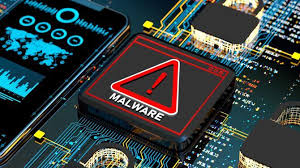Technology
Featured
India's Digital Ghost Fleet: Millions of Unpatched Android Phones Are a Ticking Time Bomb for an AI-Powered Cyberattack Wave
Editor
Jun 21, 2025
min read
3 views

In the bustling digital landscape of India, a silent, invisible fleet of millions of smartphones is sailing towards a catastrophic security storm. These are the country's 'digital ghosts'—older Android devices, often just three to four years old, that have been abandoned by their manufacturers and no longer receive vital security updates. As of mid-2025, these unpatched phones represent a vast and dangerously vulnerable frontier, ripe for exploitation by a new generation of AI-powered malware that can probe and weaponize known vulnerabilities on an unprecedented scale.
The problem stems from the very structure of the Android ecosystem. Unlike Apple, which controls both its hardware and software, enabling it to provide iOS updates to devices for five to seven years, the Android world is highly fragmented. Each manufacturer—from Samsung and Xiaomi to Oppo and Vivo—must adapt the core Android OS to its specific hardware. This process is costly and time-consuming, creating a financial disincentive to support older, less profitable models. The result is a planned obsolescence that typically cuts off security updates after just two or three years, leaving a perfectly functional device with a critically insecure digital core.
According to cybersecurity experts, this has created a two-tiered digital society in India. On one side are users with newer devices, protected by the latest security patches against emerging threats. On the other are millions of users, often in lower-income brackets or those who have purchased second-hand devices, unknowingly operating with digital front doors that are wide open. They are running on outdated versions like Android 12 or 13, which are no longer supported by security updates, and are riddled with known, publicly documented vulnerabilities.
"We are looking at a ticking time bomb. Each unpatched phone is a potential entry point for a large-scale attack," warned Alok Sharma, a cybersecurity analyst based in Bengaluru. "What's different now, in 2025, is the role of Artificial Intelligence. Previously, a hacker had to manually craft an exploit for a specific vulnerability. Now, AI can do the heavy lifting. It can scan millions of devices, identify unpatched vulnerabilities, and then use generative AI to dynamically create malware tailored to exploit that specific weakness. The scale and speed are something we've never seen before."
In early 2025, the Indian Computer Emergency Response Team (CERT-In) issued a high-risk advisory highlighting multiple critical vulnerabilities in Android versions 13 and 14. These flaws, now patched on newer devices, could allow an attacker to execute arbitrary code, gain elevated privileges, and access all personal data. For the digital ghost fleet, these warnings are meaningless as the patches will never arrive. This creates a permanent, unfixable state of vulnerability.
These phones are not just a risk to their individual owners. They form a massive, interconnected network of susceptible devices that can be co-opted into botnets for launching wider attacks, spreading misinformation, or conducting large-scale financial fraud. An AI-driven campaign could, for instance, simultaneously send hyper-personalized smishing attacks to millions of these vulnerable devices, tricking users into installing malware that exploits an old flaw in the operating system's media framework or Wi-Fi module.
"Think of it as a public health crisis in the digital realm," Sharma added. "An unvaccinated individual is a risk not just to themselves, but to the entire community because they can become a vector for disease. Similarly, an unpatched phone is a vector for malware, capable of spreading the infection across the network." As India continues its rapid digital transformation, with mobile phones at the core of finance, communication, and daily life, this ghost fleet of insecure devices poses a grave threat to the nation's collective cybersecurity. Without a concerted effort to address the lifecycle of device support and educate users about the profound risks of using unsupported hardware, this ticking bomb is set to detonate.
Editor
League Manager Editorial Team






Leave a Comment